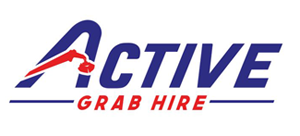Safety in construction site clearances is not just a regulatory requirement; it’s a critical component that can significantly influence the overall success of a project.
In an industry where the potential for serious injuries or even fatalities is high due to the nature of the work involved, implementing stringent safety measures is paramount.
Clearances often involve handling heavy debris and operating large machinery, which pose significant risks not only to those on-site but also to the general public and the environment around the site.
The importance of maintaining high safety standards cannot be overstated. Effective safety measures help avoid costly delays, and legal ramifications, and, most importantly, protect workers’ health and lives.
Therefore, understanding the common risks and how to mitigate them through proactive safety management and compliance with established safety standards is essential for any firm engaged in construction site clearances.
Understanding Safety Regulations
Construction projects are heavily regulated when it comes to safety, with numerous laws and guidelines set forth by health and safety authorities. These regulations are designed to ensure that every person involved in site clearances is protected from harm.
Construction firms need to stay updated with the latest regulations, including those specifically related to hazardous waste handling, noise control, and machinery operation.
Compliance with these regulations is not just about following the law; it’s about setting a standard of practice that ensures safety is always prioritised.
From the correct labelling of hazardous materials to the enforcement of protective gear usage, each guideline serves a purpose in reducing risks and enhancing the safety culture within construction sites.
Risk Assessment Procedures
Before any clearance activity begins, a thorough risk assessment must be conducted. This is a systematic process designed to identify potential hazards and evaluate the risks associated with site clearance activities.
The assessment should cover all aspects of the operations, from the entry and exit routes for vehicles to the stability of piled debris and the adequacy of existing barriers.
Following the identification of hazards, appropriate measures should be implemented to control or eliminate risks.
This might include altering the method of debris removal, providing additional safety training to workers, or introducing more robust safety monitoring practices.
Effective risk assessment is dynamic and should be revisited throughout the project to respond to new risks as they arise.
Safety Equipment and Tools
The provision of proper safety equipment is crucial for preventing injuries on site. Construction workers should be equipped with helmets, gloves, eye protection, and high-visibility clothing at all times.
Moreover, ensuring that all machinery and equipment used in the clearance are maintained to the highest standards helps prevent mechanical failures that could lead to accidents.
In addition to personal protective equipment, using the right tools for specific tasks can significantly reduce risk.
For instance, using machinery with the latest safety features for lifting heavy materials can prevent common injuries related to manual handling.
Regular safety checks and adherence to manufacturers’ guidelines are essential components of a comprehensive safety strategy.
Training and Competency
Training is another fundamental aspect of maintaining safety standards. Every worker involved in site clearances should receive training tailored to the specific risks of their role.
This includes operational training on machinery, understanding of site-specific hazards, and emergency response training.
Ensuring that workers are competent to perform their tasks not only improves safety but also enhances overall operational efficiency.
Moreover, ongoing training initiatives reinforce safety protocols and keep safety awareness high among staff.
These programmes should be viewed as an investment rather than an expense, as they significantly reduce the likelihood of accidents and the subsequent costs associated with injuries and project delays.
Emergency Preparedness
Emergency preparedness is integral to safety management in construction site clearances. Each site should have a clearly defined emergency response plan that includes first aid, fire safety measures, and evacuation procedures.
Regular drills should be conducted to ensure that all workers know how to act in case of an emergency, and all safety equipment, such as fire extinguishers and first aid kits, should be easily accessible and well-maintained.
Anticipating possible emergency scenarios and preparing for them can drastically reduce the impact of actual incidents.
Effective communication during an emergency is crucial, so establishing clear communication channels and protocols is essential for a swift and coordinated response.
Conclusion
Maintaining stringent safety standards in construction site clearances is a comprehensive process that involves understanding and implementing regulations, conducting thorough risk assessments, ensuring the use of proper safety equipment, providing targeted training, and preparing for emergencies.
By prioritising these elements, construction companies not only comply with legal requirements but also foster a safety culture that protects employees and the public.
Investing in safety is investing in the future of your projects and your people, with benefits that extend beyond the immediate financial savings to the enduring health and productivity of your workforce.
Contact us today if you are interested in our grab-hire services.

